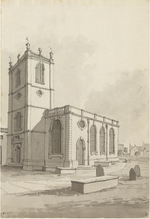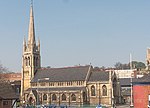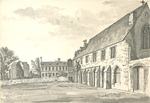Lincoln, England

Lincoln () is a cathedral city and district in Lincolnshire, England, of which it is the county town. In the 2021 Census, the Lincoln district had a population of 103,813. The 2021 census gave the urban area of Lincoln, including North Hykeham and Waddington, a recorded population of 127,540.Roman Lindum Colonia developed from an Iron Age settlement of Britons on the River Witham, near the Fosse Way road. Over time its name was shortened to Lincoln, after successive settlements, including by Saxons and Danes. Landmarks include Lincoln Cathedral (English Gothic architecture; for over 200 years the world's tallest building) and the 11th-century Norman Lincoln Castle. The city hosts the University of Lincoln, Bishop Grosseteste University, Lincoln City F.C. and Lincoln United F.C. Lincoln is the largest settlement in Lincolnshire, with the towns of Grimsby second largest and Scunthorpe third.
Excerpt from the Wikipedia article Lincoln, England (License: CC BY-SA 3.0, Authors, Images).Lincoln, England
Waterside North, Lincoln New Boultham
Geographical coordinates (GPS) Address Nearby Places Show on map
Geographical coordinates (GPS)
| Latitude | Longitude |
|---|---|
| N 53.228333333333 ° | E -0.53888888888889 ° |
Address
Skechers
Waterside North 18A
LN5 7EU Lincoln, New Boultham
England, United Kingdom
Open on Google Maps











